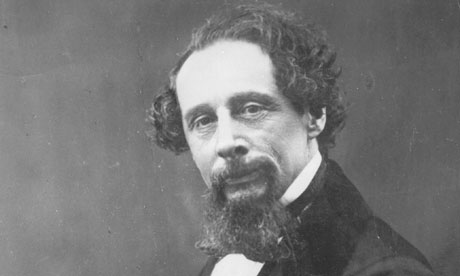
What are the qualities that make a writer endure and flourish? It's an intriguing question whose answer includes luck, good timing and the mysterious workings of the zeitgeist. Take 2012. This year sees the bicentenary of Robert Browning, Charles Dickens and Edward Lear. No need to over-think the glorious posterity of the Inimitable. He was simply a genius who created a whole world for ages to come. But with Browning and Lear it gets more complicated.
Browning's afterlife is a conundrum. He was the equal of Tennyson, yet the object of much scorn. Wilde's celebrated crack ("Meredith was a prose Browning, and so was Browning") can stand for a range of baffled commentary inspired by his dramatic monologues, Fra Lippo Lippi, for example. He also wrote some lovely, intimate poems (especially Meeting At Night), but is remembered in schools as the author of The Pied Piper of Hamelin.
But he was hardly an innocent. A transgressive figure like Graham Greene used to quote Browning's fascination with "the dangerous edge of things" with approval. Perhaps it's Browning's combination of darkness and light that's appealing to posterity. Or perhaps it's because he's so quotable, and so memorable. Browning's poetry does what readers think poetry should do, ie supply natural and effortless rhyme, narrate a story and touch our hearts.
Edward Lear is even more of a puzzle: a strange, itinerant figure whose restless imagination and peculiar mind put him at odds with much of Victorian convention. He was also a watercolourist of genius. Far from being repressed by his time, he flourished within it, to an extraordinary degree, despite a lifelong battle with epilepsy and depression. Lear's celebrated limericks demonstrate the antic disposition of a society that loved to play truant from its sober self.
Lear's nonsense poems – like Browning's poetry – have a frisson of danger mixed with extraordinary tenderness. It's a short step from the Old Man of Buda to Ruthless Rhymes for Heartless Homes. Subsequent writers have given the limerick the versatility of a nonsense haiku.
And that's not all. The Owl and the Pussycat is as famous as some of the poetry in Alice in Wonderland. Indeed, The Jumblies or the Pobble Who Has No Toes could have been made up by the Mock Turtle or Humpty Dumpty. Again, like Browning, Lear is memorable. More than Browning, he lives in the imaginations of successive generations of young readers. That, perhaps, is enough to guarantee a literary afterlife.
But guarantees are in short supply – just look at Dickens's friends. Who now reads Thomas Carlyle's fiction? Edward Bulwer-Lytton, the novelist and playwright who founded the Guild of Literature and Art with Dickens, is remembered now only as a figure of fun. There is, as they always say, no accounting for taste.
• Thomas Carlyle's "Didactic Novel" Sartor Resartus is the only work he published which could be described as a novel. Wooton Reinfred remained uncompleted and the rest of his fictional output consisted of short pieces. This has been corrected. Washington Irving's short fiction, including "The Legend of Sleepy Hollow" and "Rip Van Winkle" are still well-known, but whether A History of New York or Bracebridge Hall should properly be called "novels" is unclear, so mention of Washington Irving has been removed

